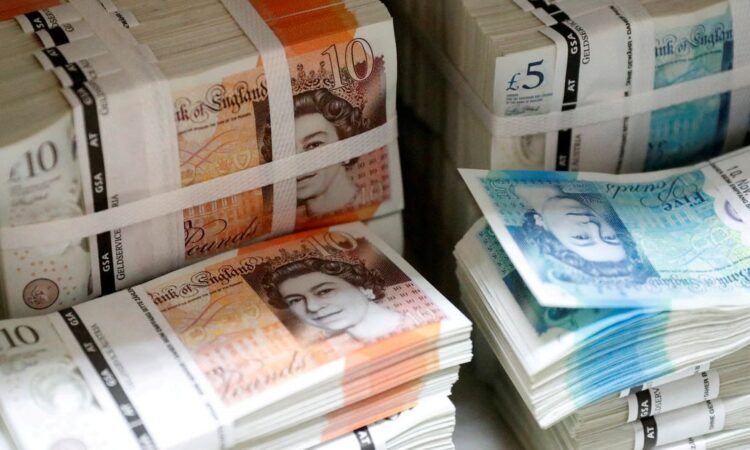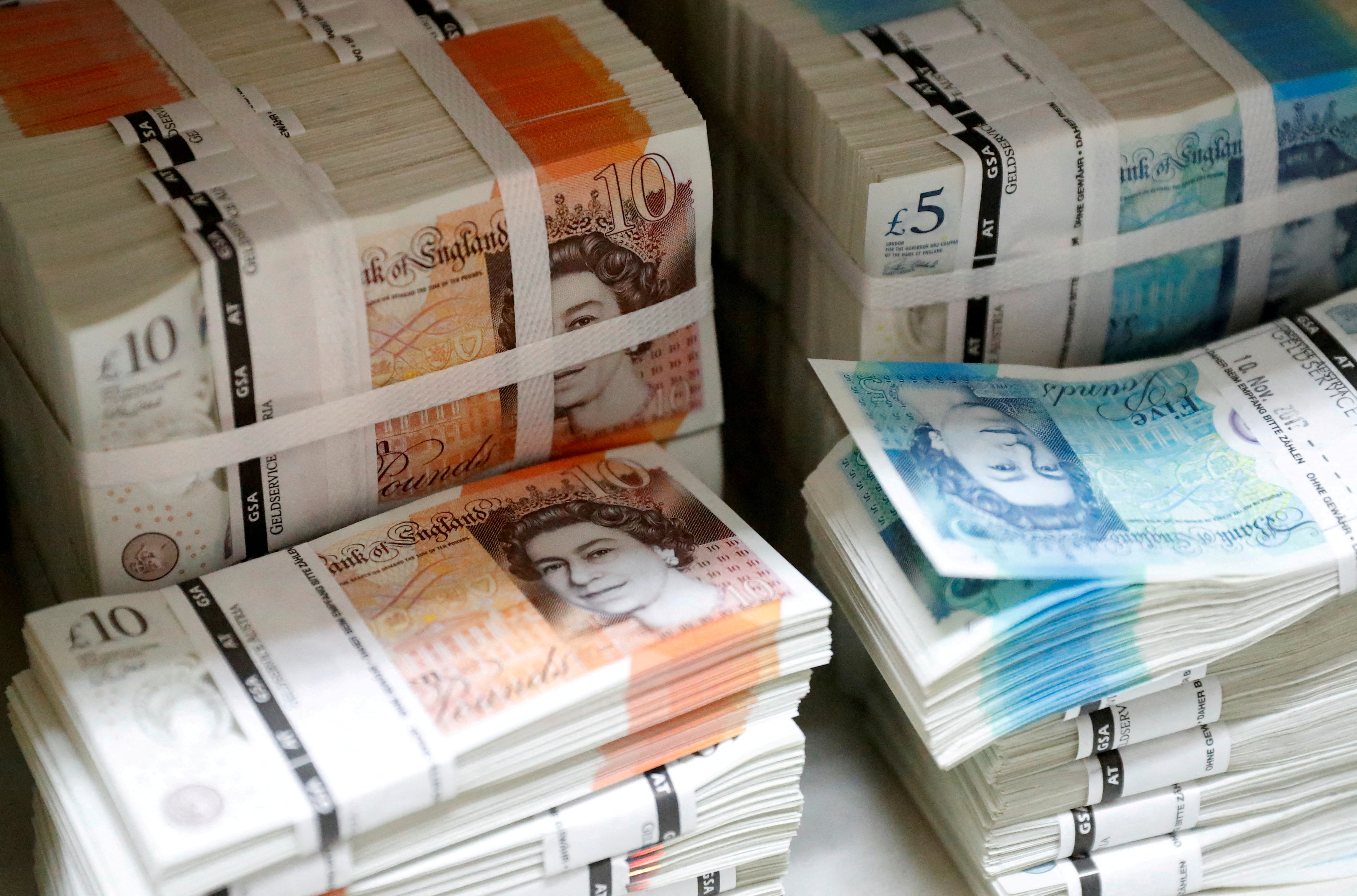

Wads of British Pound Sterling banknotes are stacked in piles at the Money Service Austria company’s headquarters in Vienna, Austria, November 16, 2017. REUTERS/Leonhard Foeger/File Photo
LONDON, Aug 11 (Reuters) – The pound broke three straight days of losses on Friday after data showed the British economy grew more than expected in June, which boosted sterling slightly against the dollar and the euro.
British economic output grew by 0.5% in June, figures from the Office for National Statistics showed on Friday, above expectations in a Reuters poll of economists which had forecast growth of 0.2%.
Britain, however, remains the only big advanced economy yet to regain its pre-COVID, late-2019 level.
The stronger than expected showing helped to justify bets that the Bank of England will keep on raising interest rates, given the central bank stressed this month that resilience in the economy was one of the factors that would underpin its judgement.
Sterling was last up 0.24% against the dollar at $1.2707, a touch higher than before the data and outperforming other G10 currencies, but was still on course for a fourth consecutive weekly loss.
The euro fell against the pound, dropping 0.1% on the day to 86.50 pence.
“The data was very strong, there is no other way to put it. I think the relatively muted (market) reaction is maybe because the markets are taking the scale of outperformance in manufacturing activity in June as a one off,” said Derek Halpenny, head of research global markets EMEA at MUFG.
The data showed that in the second quarter the manufacturing sector had its best quarter since early 2019, excluding the initial rebound from the first COVID-19 lockdown in 2020.
Attention now turns to the next batch of UK numbers due next week – inflation data as well as wages and jobs.
“Now if there’s even a slight upward bias in the print next week relative to expectations that will obviously confirm more tightening to come,” said Halpenny.
Current market pricing roughly indicates expectations of two more Bank of England rate rises in this cycle. In comparison, the Federal Reserve, and potentially also the European Central Bank, are seen as having finished raising rates.
Reporting by Amanda Cooper and Alun John; Editing by Samuel Indyk and Jane Merriman
Our Standards: The Thomson Reuters Trust Principles.



